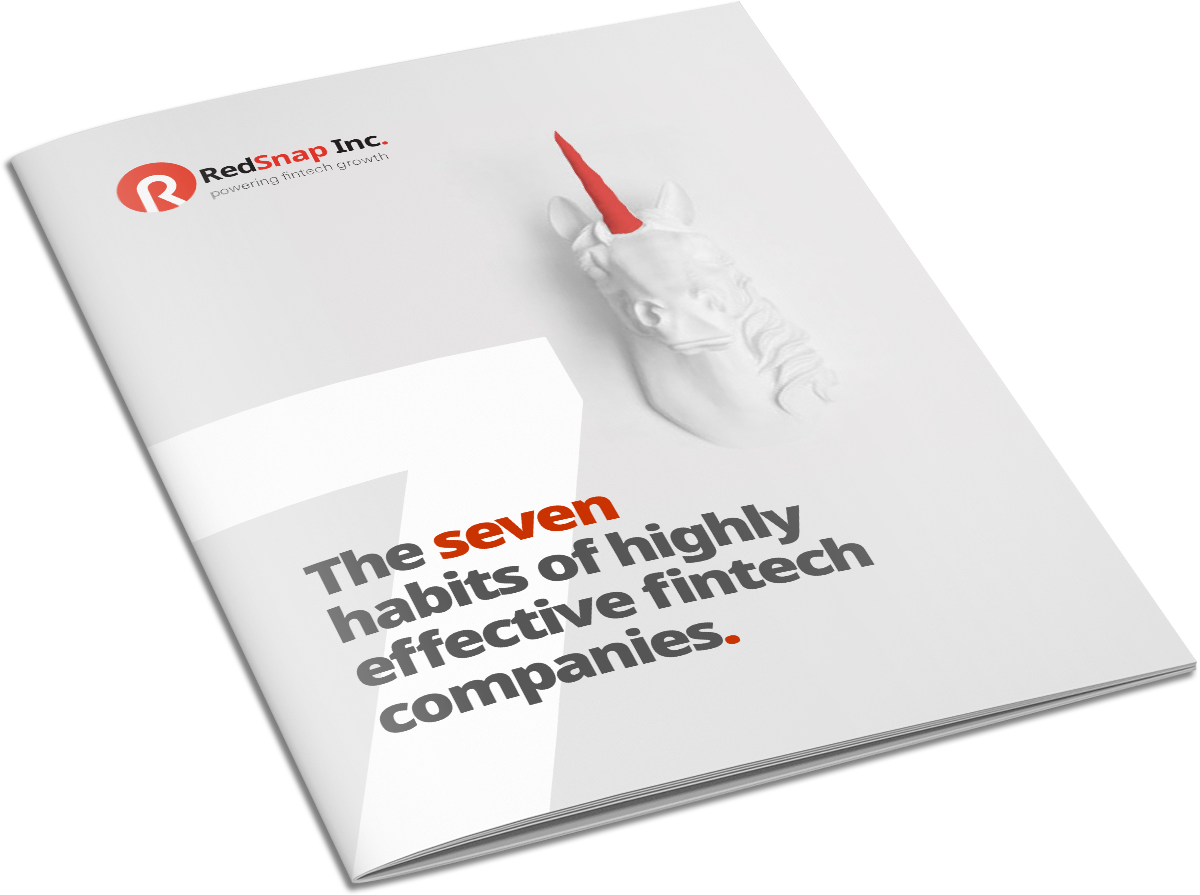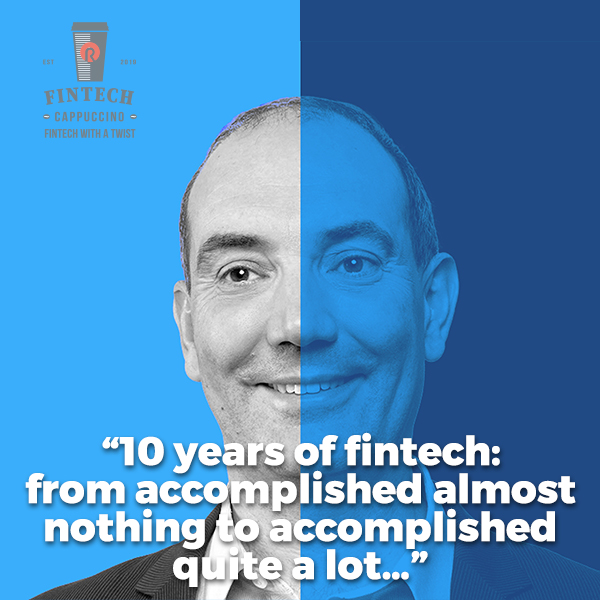The foundation of any successful go to market strategy ...
Marketing
Sales
Automation
For business leaders
For sales leaders
For marketing leaders
RedSnap Inc.
RedSnap Inc. is an agency for fintech branding, marketing & sales. We power fintech growth by aligning your marketing & sales. We develop appealing brands, impactful marketing campaigns and successful sales strategies that truly drive growth. Let’s simply say: we make sure your (potential) clients see you, like you and buy you.
For fintechs
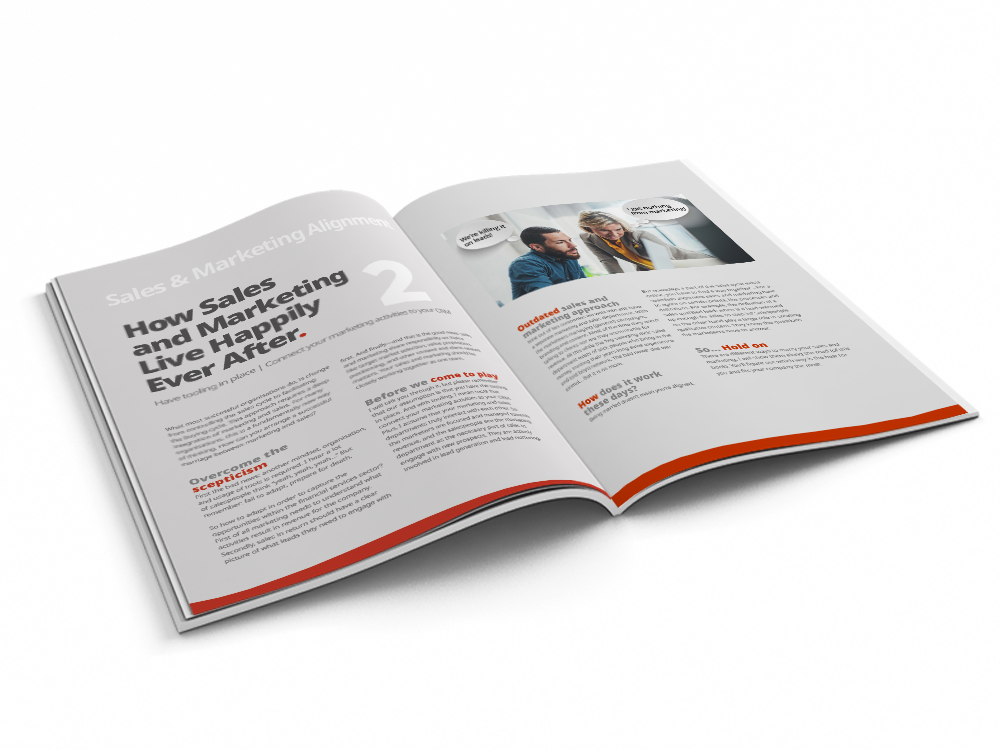
Download here.
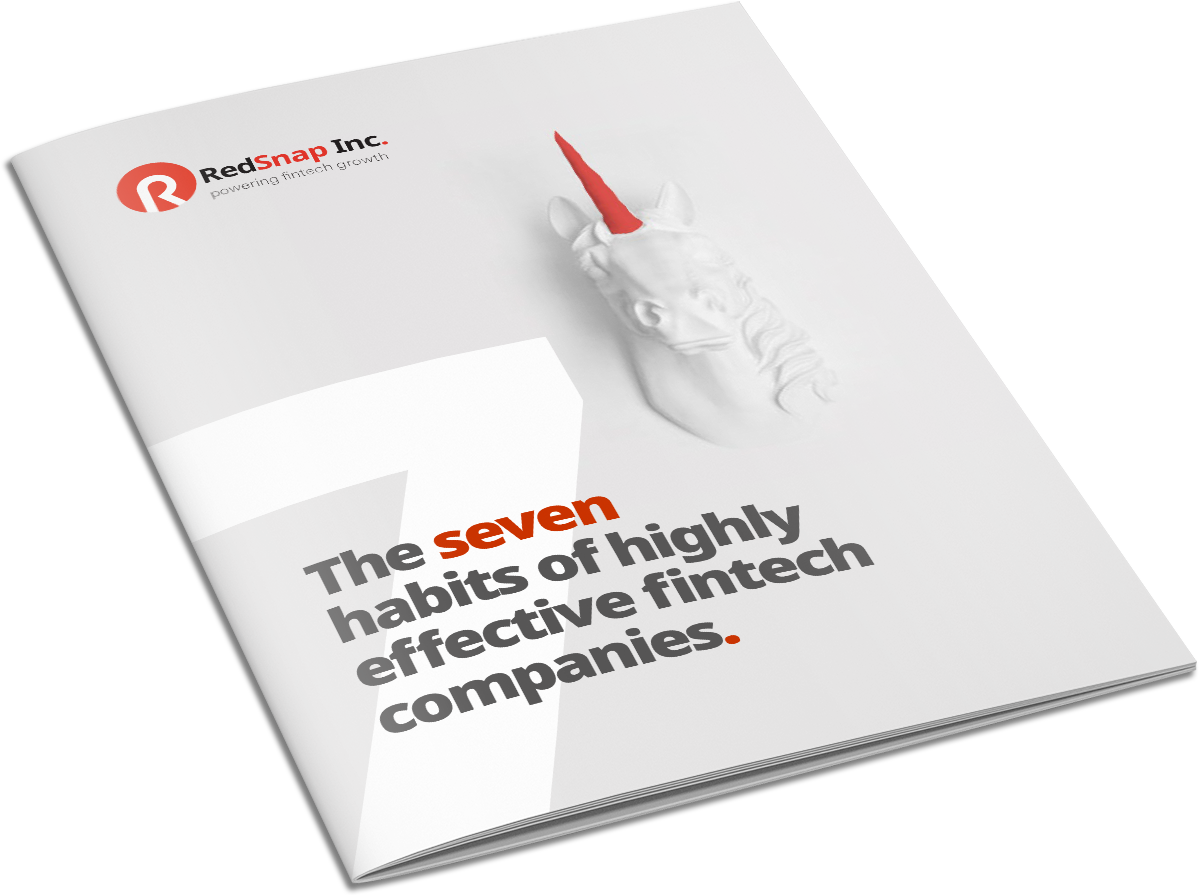
eBook 7 habits of highly effective fintech companies
Fintech
Mind the Gap!
Hot or not? : Pipeline optimization.

Phrases like 'pipeline optimization' that we use in our Sales & Marketing businesses do not always sound exciting. Nevertheless, the topic of pipeline optimization is as hot as can be! If you optimize your sales pipeline, you'll find the most effective way from lead to deal. Sounds like a plan, but how do you do it?
>>Disclaimer: please be aware that this optimization is an exercise for the sales manager. Do not bore your salespeople with this. They don't need any more administrative tasks, but need to spend as much time as possible with their potential customers.<<
Let's first set our priorities straight: pipeline optimization is as important for you as it is for your potential (fintech) client:
- You waste less time on burning sales cycles.
- Your customer will have a great time in your optimized pipeline as your customer journey is smooth as can be (which in the end will increase sales).
So why don't we always take pipeline optimization seriously?
Pipeline optimization is like eating healthy: the benefits are obvious, but sometimes it seems too much effort. For many businesses, their pipeline optimization is a challenge. They tend not to take it seriously or are approaching it from the wrong angle.
Optimizing the pipeline is all about identifying the right potential customers, pleasantly engaging with them, and in the end, successfully finishing the transaction. If you pay attention to all these steps, it will result in better revenue, profit, and… Hello there: minimizing engagement costs.
So let's shed some light on the most forthcoming challenges companies face and the mistakes they make.
The misconception of pipeline stages
Most companies actually fail with something small (almost silly) as the definition of their pipeline stages. I mean, why should you care about definitions at all? And precisely that is what goes wrong here:
- Companies fail to define their stages and just make them a reflection of their internal process.
- They only use the pipeline stages that their marketing-or sales software provided.
Yet, there are many more and better ways to define your pipeline stages. They should, for one, reflect the buying stages of your clients as much as possible. See what Iwe did there? We just turned it to your customer's point of view (and most probably to their needs).
While we are on the subject of your customers: roughly they go through three stages:
- The awareness stage is where a client is aware of their problem and defines its needs.
- The consideration stage is where clients invest in resources and evaluate alternatives.
- The Decision stage is where risk evaluation and buying take place.
The rough pipeline stages I would advocate are your clients' actions mirrored to commercial activity:
- Pipeline stage 'Identified' - which clients have a problem you can solve?
- Pipeline stage 'Connected' - is there a successful connection between you and the most influential people in the client's Decision-Making Unit (DMU)?
- Pipeline stage 'Exploring' - BANT (budget, authority, needs, and timeline) or other opportunity evaluation methods.
Whatever you do, or however you want to define them: keep the number of stages limited and set very clear milestones to move to the next stage.
Choosing the right angle with lead qualification
Lead qualification is an essential part of the pipeline optimization exercise. It determines if your company will spend sales resources on an opportunity and actively engage with a potential client. To optimize your revenue and profit - or to minimize your engagement costs. Even more, if you are a smaller company with limited sales power, make sure you will allocate time and resources to the clients with the best WIN chances.
Most clients we work with don't have a straightforward deal qualification process in place. They don't consider simple opportunity qualification questions or client assessment questions. Try to sit down with your team and figure out what you would like to know from clients or the opportunity to spend time and resources on them. I guess that it's more discipline than rocket science.
Hand it over, close the gap
Your pipeline begins with leads and ends with sales. Somewhere, somehow marketing and sales need to work together to start and finish an entire sales cycle. Be prepared for that. Again (surprise), it is all about good marketing & sales alignment. It begins with choosing which client (groups) to go after, the sales enablement, and the handover from an MQL to an SQL.
Think about it: if this connection is broken, the ROI on your commercial organization will never be raised.
And don't be afraid to do the maths
Most companies don't dare to do the maths on their pipeline optimization. Because they realize they have not invested enough by their marketing & sales capacity. Or they just set targets they will never hit.
But just to humor me, let's do some maths. Let's assume you need to grow your nett revenue by 2 Million. Your average deal size is 100K, and you have 4 pipeline stages till WIN: Identified, Connected, Exploring, Proposing, and WIN. And let's assume that you have a 25% conversion rate to the next stage….
In numbers, this means:
- You need 20 WINs to hit your target.
- 80 proposals out of the door.
- 320 clients which you are exploring.
- You need to engage with 1280 clients.
- You'll have 5120 clients identified.
Pretty big numbers! To make these numbers, you really should start thinking about how to digitalize and start preparing and optimizing your (digital) marketing and sales functions… Or stop dreaming.
Continue till the end and start anew
Pipeline optimization has so many aspects that make it interesting as it can be. Hot or not is maybe not the right question. Pipeline optimization is rather about if you dare to face the challenge. And also about discipline, continuously optimizing, better planning, meeting etc. Till the end of your pipeline, and then you start anew.
In our next blog we will talk about sales enablement.
The Series
Mind the Gap.
-
From lead to deal1: The sales game has changedFacilitate the buyer's journey, change your mindset
Lack of structure and a lot of creativity. Are these the characteristics that come to mind when asked to describe a great salesperson? Not really right? Yet, the best sales people I know in the industry are not very structured, not very organised nor disciplined.
-
Sales & Marketing alignment2: How Sales and Marketing live happily ever afterHave tooling in place | Connect your marketing activities to your CRM.
In our article 'From lead to deal: The sales game has changed' we observed that successful organizations changed from controlling the sales cycle to facilitating the buying cycle. This approach requires a deep integration of marketing and sales. For many organizations this is a fundamentally new way of thinking. How can you arrange a successful marriage between marketing and sales?
-
Branding & identity3: Who do you think you are?How to get your branding in place.
Welcome to our ‘mind the gap’ article about brand & identity. Let’s first make sure we are all on the same page about the terminology because the language used is often misunderstood. Brand: Your brand is a combination of a visual identity, tone of voice and behaviour - most visibly expressed through your logo, taglines and images used in communication campaigns.
-
Positioning4: Finding the right positionPositioning is all about differentiation.
Welcome to our ‘mind the gap’ article about positioning. Here we will discuss the importance of positioning and how it can help you stand out from your competitors. How many times have you walked into a bank to pitch for a piece of business only to be told ‘we already have the functionality you offer’ or ‘we solved that problem a long time ago’.
-
Value proposition5: Value proposition: the extra mileWhat problem do we solve and for whom?
In this ‘mind the gap’ article we will discuss the value proposition and how it will help your fintech sales efforts in the financial services sector. That is, if applied correctly... Going the extra mile...
-
Target markets6: Finding your target audienceHow do you enter the considerable and risk-averse market of banks?
Most Fintechs face the same challenges in finding their target audience. They have a fantastic product which solves a problem for a bank. But how do they enter the considerable and risk-averse market of banks? A challenge like this isn’t a day at the beach, or is it?
-
Buying committee7: Not a shopaholicGet to know the buying committee
Before banks buy your product (or service), you first need to convince the buying committee. The people on this committee make sure that the banks money is well spent. Here is how you deal with them in order to close a deal.
-
Competition analysis8: The illusion of the special snowflakeNever underestimate your competition
A lot of fintechs might feel the urge to skip the competition analysis. Simply because they feel they don’t have any competitors. Their product is a unique solution, so why bother with looking at what others do? Well, fintechs should worry because there is always some competition; ‘special snowflake-ness’ is an illusion.
-
Sales & Engagement approach9: Stop selling. Start giving!Just selling for the sake of it has and will never work.
It might come as a surprise to you, but focusing on selling is sometimes the worst thing a sales organisation can do. A much better approach is to focus on the problem you solve for your customers and how can you help them navigate the deal through their own organisation.
-
Sales Enablement11: Help your sales star winSales enablement is everything you need to do to enable your sales people to sell more
Let's have a look at 'Sales Enablement’. There seem to be many misunderstandings about this topic, but most companies don't even notice it.
-
Winning Sales12: Winning Sales is not everything: it is the only thingIt is not that companies forget about sales, but rather that they don't know how to play the sales game.
Sales is like playing tennis. Nobody cares about how many balls you hit, or services you make, how hard you hit the ball or how many miles you ran on the court. At Wimbledon, it is all about the performance: winning the game. And that's the same with winning sales.
The Ultimate Guide to Winning Sales in Fintech.
In this e-book, you'll learn about the one important question you need to focus on: how to win the market, as a team. Get your own copy and conquer the fintech world!
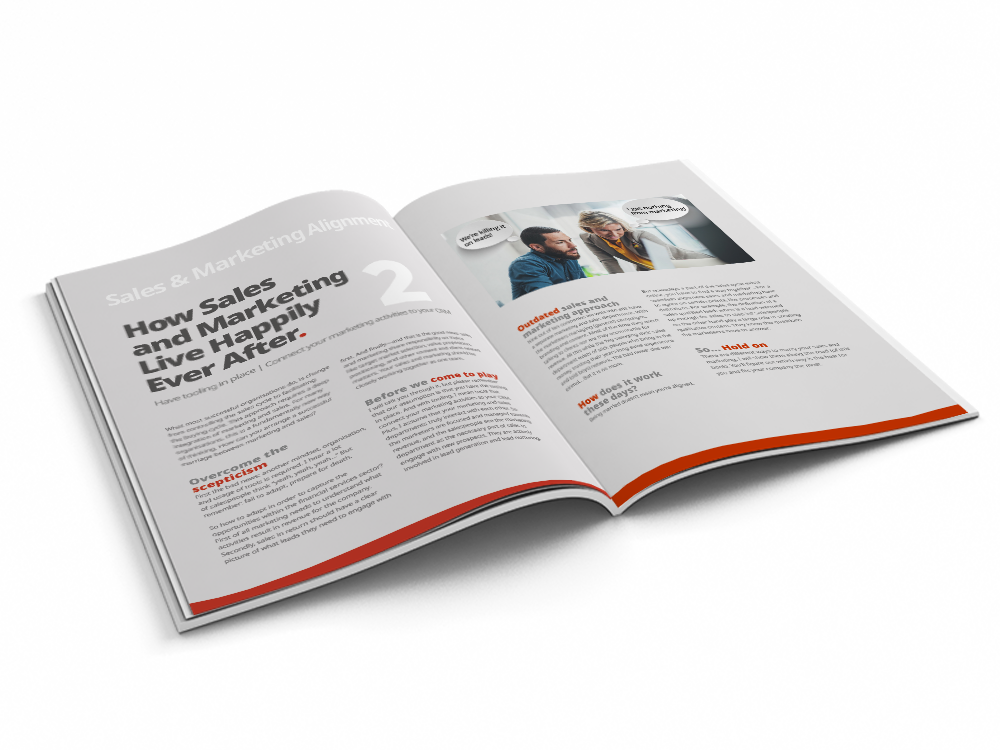
The 7 habits of highly effective fintechs
What are the 7 key habits that are continuously practised by successful fintechs? Follow the habits outlined in this e-book and you will be well on the way to growth.
